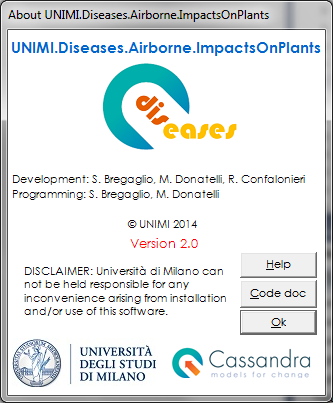OBJECTIVE
The AgromanagementDisease component simulates the reduction of the disease progress rate as a function of the application of a chemical application and the decay of the effectiveness of the active principle as a function of air temperature and rainfall.

Form about of the ImpactsOnPlants component
RATIONALE
The application of fungicides is an essential and widespread practice to control foliar plant pathogens (Bruhn and Fry 1982), although their systematic use poses a critical risk to the environment. The timing and the amount of the application of fungicides have to be accurately planned, by considering the evolution of the disease severity and the interactions between the host, the environment and the pathogen, as well as the mode of action of fungicides and the risk of development of resistant strains. Simulation models are often incorporated into disease warning systems to optimize the timing of fungicide applications, basing on the occurrence of specific phases of the life cycle of the pathogens (e.g., infection, sporulation) as a function of the agro-environmental conditions (e.g., Madden et al., 2000).
Created with the Personal Edition of HelpNDoc: Free EBook and documentation generator